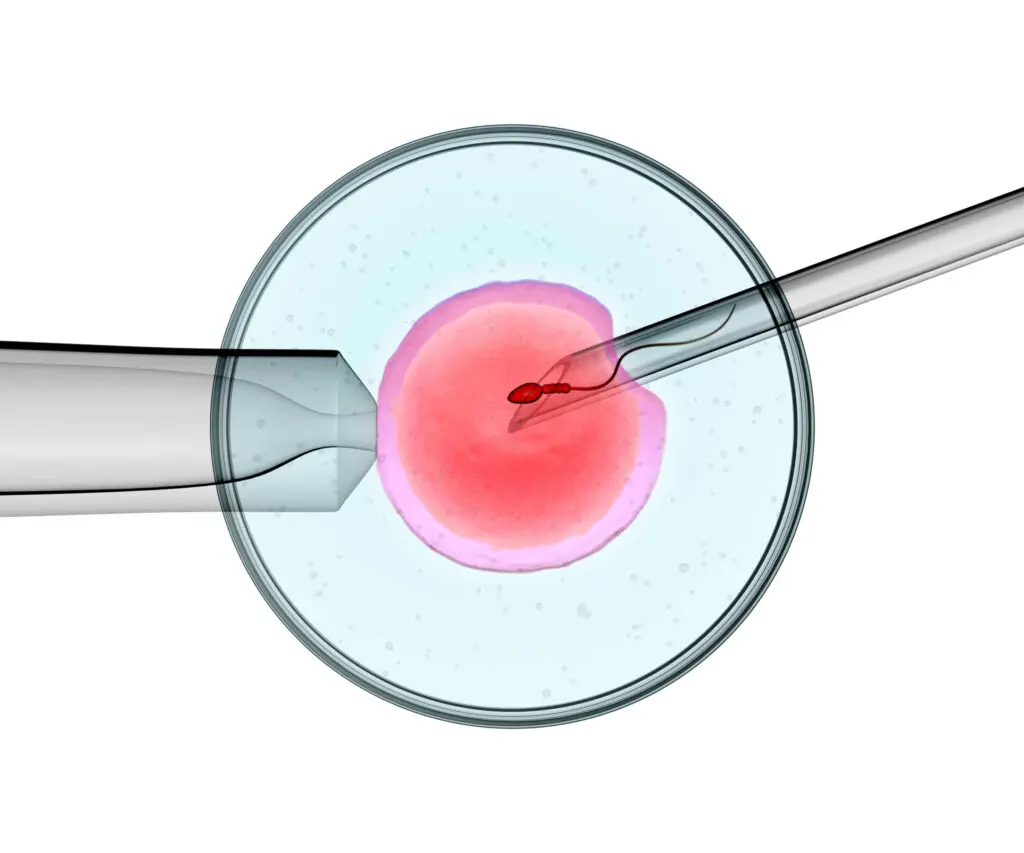
Men with an abnormal semen analyses will have a follow-up appointment with their reproductive endocrinologist & fertility specialist who will often recommend a hormone and genetic evaluation when there is a low sperm count or the sperm are absent.
In cases in which it is suspected there may be an anatomic cause of infertility, you may be referred to a urologist who specializes in male fertility. It is important to see a urologist with specialty training in male fertility to ensure you are properly evaluated and receive medications that will increase sperm parameters. For example, treatment of low testosterone levels with testosterone instead of Clomiphene (Clomid) or human chorionic gonadotropin (hCG) will result in worsening sperm counts. At your appointment with the urologist, the physician may perform an exam or ultrasound to determine if there a complete or partial blockage that is preventing sperm from moving from the testicle to the penis, and review any previous lab results you had performed.
Sperm Retrieval Procedures for IVF with ICSI
The following are procedures that typically result in enough sperm retrieved to perform In Vitro Fertilization (IVF) with Intracytoplasmic Sperm Injection (ICSI), a procedure in which the sperm are injected directly into the egg. Typically the numbers of sperm acquired with any of these procedure is too few for the male partner to successfully conceived with their partner through Intrauterine insemination (IUI) making IVF with ICSI necessary. Procedures are always best performed close to the time of egg retrieval. Freezing of sperm in the days prior to egg retrieval and then thawing them can result in a 10-30% loss of sperm.
Sperm form Retrograde Ejaculation
For men with retrograde ejaculation, when the sperm enters the bladder during ejaculation instead of leaving the body, you will be asked to take sodium bicarbonate prior to semen collection to make the urine less acidic. The sperm can then be retrieved from the urine to be in used in IVF with ICSI.
Percutaneous Epididymal Sperm Aspiration (PESA)
This procedure is performed in the office with local anesthesia and a small needle. Sperm are aspirated from the epididymis located at the top of the testes until an adequate number of sperm are retrieved.
Microepididymal Sperm Aspiration (MESA)
This procedure is similar to PESA, except the individual sperm tubules in the epididymis are aspirated under a microscope through an incision, allowing for needle placement closer to the testes where there is a higher number of sperm. This procedure provides higher live birth (pregnancy with delivery) rates than procedures retrieving sperm from the testes.

Testicular Sperm Extraction (TESE)
This procedure can be used in men with no sperm who have anatomic blockage (obstructive azoospermia) or who do not have any anatomic blockages (nonobstructive azoospermia). Sperm is retrieved through an open surgical procedure on the testes and provides the greatest number of sperm (of any of these procedures) for men with nonobstructive azoospermia. Since this procedure is done under a microscope, it is the least traumatic to the testes and can help men who have testicular failure or Kleinfelter’s syndrome. This procedure is best performed on the day of the egg (oocyte) retrieval to maximize the number of moving sperm. Selection of donor sperm to have as a backup on the day of egg retrieval is recommended in case no sperm are retrieved from the TESE procedure.
Testicular Sperm Aspiration (TESA)
A procedure in which a needle is placed in the testes under anesthesia to retrieve sperm directly.
Percutaneous Testicular Biospy
A small cylindrical biopsy of the testes is performed to retrieve sperm without the need for a microscope or microsurgical training.

Surgical Treatment of Sperm Blockage (Obstructive Azoospermia)

Vasectomy Reversal (Vasovasotomy)
The two ends of the vas deferens, the conduit of sperm from the testes to the prostate, are brought together in the area they were previously separated during the vasectomy.
Vasoepididymostomy
This procedure attaches the vas deferens to the epididymis, the place where sperm are stored at the top of the testes, when there are single or multiple blockages in the epididymis.
Transurethral resection of the ejaculatory ducts (TURED)
When there is a blockage at the place where the vas deferens connects to the prostate, the TURED procedure can relieve the obstruction to allow sperm to pass.
If you would like to know more about these procedures, are experiencing male factor infertility or would like a referral to urologist specializing in male fertility please contact us 713-401-9000.
Posts Related to Male Fertility Procedures
What is Intracytoplasmic Sperm Injection (ICSI)?

Getting pregnant can be more challenging than it seems, with recent studies suggesting that about 1 in every 5 women have difficulty conceiving Before a sperm can fertilize an egg, […]
